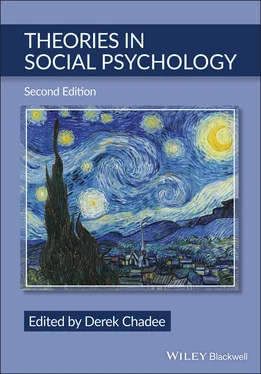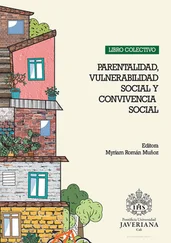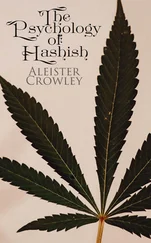Theories in Social Psychology
Здесь есть возможность читать онлайн «Theories in Social Psychology» — ознакомительный отрывок электронной книги совершенно бесплатно, а после прочтения отрывка купить полную версию. В некоторых случаях можно слушать аудио, скачать через торрент в формате fb2 и присутствует краткое содержание. Жанр: unrecognised, на английском языке. Описание произведения, (предисловие) а так же отзывы посетителей доступны на портале библиотеки ЛибКат.
- Название:Theories in Social Psychology
- Автор:
- Жанр:
- Год:неизвестен
- ISBN:нет данных
- Рейтинг книги:5 / 5. Голосов: 1
-
Избранное:Добавить в избранное
- Отзывы:
-
Ваша оценка:
- 100
- 1
- 2
- 3
- 4
- 5
Theories in Social Psychology: краткое содержание, описание и аннотация
Предлагаем к чтению аннотацию, описание, краткое содержание или предисловие (зависит от того, что написал сам автор книги «Theories in Social Psychology»). Если вы не нашли необходимую информацию о книге — напишите в комментариях, мы постараемся отыскать её.
—Robert J. Sternberg,
—Phillip G. Zimbardo, Ph.D., Theories in Social Psychology
Theories in Social Psychology, Second Edition,
Theories in Social Psychology — читать онлайн ознакомительный отрывок
Ниже представлен текст книги, разбитый по страницам. Система сохранения места последней прочитанной страницы, позволяет с удобством читать онлайн бесплатно книгу «Theories in Social Psychology», без необходимости каждый раз заново искать на чём Вы остановились. Поставьте закладку, и сможете в любой момент перейти на страницу, на которой закончили чтение.
Интервал:
Закладка:
Research by Keltner et al. (1993) is supportive of the view that affects influence the way we make judgments and attributions of future events and responsibility. Siemer’s (2001) study supports the dispositional mood model’s view that our moods influence our generalized appraisal inclinations. Findings by Lerner and Keltner (2001) have also shown that our cognitive evaluation of risk is influenced by the specific affect state. Fear states were more likely to incite pessimistic risk evaluation than anger, which was more likely to create optimistic risk assessment. These effects were moderated by certainty and control (see also Johnson & Tversky, 1983).
The importance of appraisal to emotions (i.e., primary, secondary) was articulated by Lazarus (1982) and later elaborated by Smith and Lazarus (1993), who categorized six appraisal components related to primary and secondary appraisals. These categories falling within the primary and secondary appraisals include motivational congruency (evaluation of goals); motivational relevance (commitment); accountability (assignment of responsibility of blame and praise); problem-coping potentiality (resolvability); emotional-focused potentiality (emotional management of situation); and future expectancy (changeability of situation). The emotions aroused would be determined by the set of components that are present. Smith and Kirby (2001), in elaborating on Smith and Lazarus (1993) theory, note that the appraisal processes take place correspondingly and involve an automatic associative process, a conscious reasoning of events, and a continuous appraisal- detector process that assess the information that comes from the associative and reasoning processes. The emotion experienced is a result of these dynamics.
Berkowitz and Harmon-Jones (2004) posit that anger emerges as blame and is assigned as a negative event to a causal agent external to the individual. Unlike other negative emotions, anger is associated not with an avoidance tendency but with an approach motivation inclination. Berkowitz’s (1990, 1993, 1999, 2003) cognitive–neoassociationistic (CNA) model of anger emergence postulates that both avoidance and approach tendencies can be generated by an aversive situation and not just one or the other. Extending this argument to reactance theory, a removal of a freedom can create both fear (flight) and anger (fight), depending on the circumstances. One emotion may overpower the other determining the intensity of arousal and degree of psychological reactance.
Harmon-Jones and Allen (1998) found that anger was associated with more left anterior cortical activity than right. This brain activity was explained more by approach motivation associated with dispositional anger. Generally, negative emotions and avoidance motivation are associated with the right anterior cortical area of the brain, while positive emotions and approach motivation are associated with the left anterior cortical area (Harmon-Jones & Allen, 1998). The authors suggest that dispositional anger is associated with approach motivation and less with withdrawal or avoidance motivation. Later, Harmon-Jones and Sigelman (2001) research findings confirmed that state-induced anger was also associated with left prefrontal cortical activity. Further, left frontal activity created by anger does not restrain amygdala action but is “co-varying with it” (Harmon-Jones, 2004). The relationship between left frontal cortical activity and resolution of inconsistency via approach motivation is also supported by Harmon-Jones (2004). Also see Harmon-Jones et al. (2013) for distinction between approach and avoidance motivation.
Steindl et al. (2015) also argue for a research focus on reactance and other negative (and positive) affect rather than mainly on the current emphasis of anger. They note that Chadee (2011) advocated that approach motivation was an important prerequisite for the occurrence of psychological reactance. Consistent with Chadee (2011) theorization and testing the approach motivation hypothesis, Mühlberger et al. (2020) with the use of electroencephalography (EEG) found an association between reactance and increase activity in the left frontal alpha asymmetry, an area of the brain associated with approach motivation. This relationship was found for personal experience of freedom threats and not indirect experiences of observing the freedom of others threatened. Reactance evokes particular kinds of emotion, and the emotions evoked will determine whether there is left or right frontal brain activity. This fact has implications for the reduction of reactance, especially in volatile and high-risk situations.
Mention of physiological arousal and emotions are scattered across the many works indirectly related to reactance theory. A few reactance studies have used the emotion/affect dimension to assist in explanations of behavior. For example, earlier research had indicated that reactance was associated with somatic tension and increased activation of the sympathetic nervous system, as reflected in increases in both epinephrine and norepinephrine (Price et al., 1985). Brehm and Wortman (1975) model implies emotional intensity as a factor that increases striving to overcome failure and decreases in motivation as a function of being unable to control and determine outcome. However, the concept of affect intensity was never integrated or elaborated in the theory.
The literature is practically void of systematic research on reactance and emotions. Neither is there an integration of findings on affect into the theory or any kind of theory modification. Brehm (2004) notes, with respect to cognitive dissonance, that more consideration is needed of the role of affect state, to which little emphasis has been given. Miron and Brehm (2006, p. 8) acknowledge the importance of understanding the processes in arousal when they stated:
Obviously, more work is needed to chart the physiology of reactance. An investigation of this sort would help explore important questions such as what happens to reactance arousal when one cannot restore an eliminated freedom or whether observers experience reactance arousal when they witness threats to other people’s freedoms.
Assumptions and Propositions of an Affect Arousal Reactance Theory (AART)
The following assumptions and propositions toward an Affect Arousal Reactance Theory (AART) build on and add to Professor Jack Brehm’s (1966) theory and offer another dimension to the understanding and development of psychological reactance.
Assumptions
1 There is a dynamic relationship between cognitive and affect processes.
2 Affect states and their concomitant arousal levels influence the intensity of reactions toward source(s) that threaten the removal of a free behavior.
3 Cognitive and affect processes, singularly or jointly, operate to accentuate or attenuate the intensity of reactance toward the source(s) that directly or indirectly threaten the removal of a free behavior.
Propositions
1 Negative affect associated with an approach motivation is more likely to increase psychological reactance than negative affect associated with avoidance motivation. The greater the perceived threat to a free behavior or the more valued a free behavior, the more intense the affect toward the source of the threat to the free behavior.
2 There is a direct relationship between the intensity of the affect arousal and the level of psychological reactance experienced. The higher the level of affect arousal the higher the magnitude of psychological reactance. Both the valence and intensity of affect state influence the degree of psychological reactance experienced.
3 Combination of state and trait reactance association with negative affect and approach motivation is more likely to increase the intensity of psychological reactance than the presence of only state or trait reactance.
Читать дальшеИнтервал:
Закладка:
Похожие книги на «Theories in Social Psychology»
Представляем Вашему вниманию похожие книги на «Theories in Social Psychology» списком для выбора. Мы отобрали схожую по названию и смыслу литературу в надежде предоставить читателям больше вариантов отыскать новые, интересные, ещё непрочитанные произведения.
Обсуждение, отзывы о книге «Theories in Social Psychology» и просто собственные мнения читателей. Оставьте ваши комментарии, напишите, что Вы думаете о произведении, его смысле или главных героях. Укажите что конкретно понравилось, а что нет, и почему Вы так считаете.












